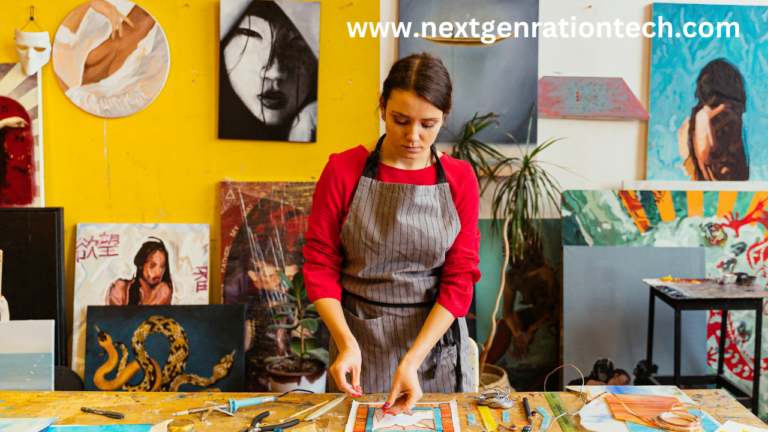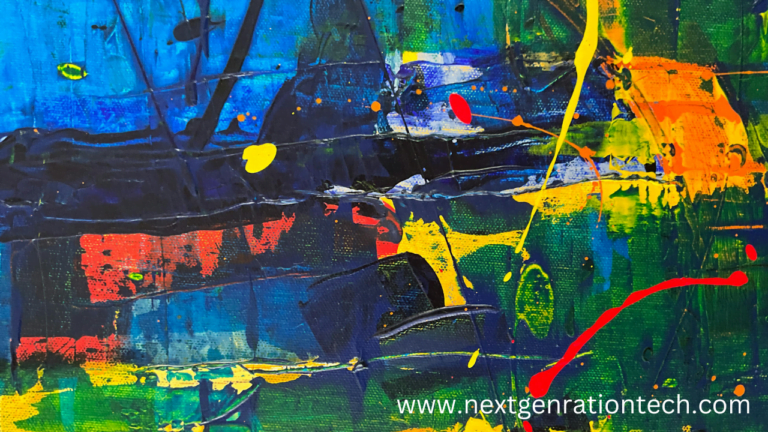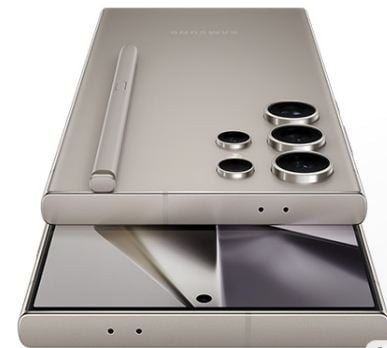What is artblock or Blocked Artist? Discover what art block is, its causes, and effective strategies to overcome it in blog. Learn how to reignite your creative spark, beat creative stagnation, and maintain a healthy artistic practice. Whether you’re a seasoned artist or just starting out, this article offers practical tips, inspiration, and support to help you unleash your creativity and thrive. Say goodbye to art block and hello to a vibrant, fulfilling creative journey.
Introduction -Art Block Meaning, What is Art Block or Blocked Artist
Art block, Blocked Artist or Artist’s Block, creative block is like hitting a mental roadblock in your creative journey. Imagine you’re an artist staring at a blank canvas, but your mind feels empty, and ideas just won’t flow. It can cause you to doubt your talents and is frustrating. Art block can happen for many reasons, like feeling overwhelmed, stressed, or simply stuck in a rut. It’s normal, and most artists experience it at some point.

The Silent Struggle: Unveiling the Causes of Artist's Block
Ever feel like your creativity has gone on vacation? You stare at your canvas, sketchbook, or instrument, yearning to create something beautiful, but nothing comes to mind. This, my friend, is artist’s block – a frustrating yet common experience for artists of all levels. But what exactly causes this creative roadblock? Let’s delve into the culprits behind artist’s block:
Mental and Emotional Rollercoaster:
- Stress Overload: Feeling overwhelmed by work, personal issues, or financial burdens can drain your mental energy and stifle your creative spark.
- Fear of Failure: The fear of creating something bad or not living up to expectations can be paralyzing. It can hold you back from taking risks and exploring new ideas.
- Burnout Blues: Pushing yourself too hard creatively can lead to burnout. Taking a break and allowing yourself to recharge is essential for creative rejuvenation.
Inspirations:
- Stuck in a Rut:Falling into repetitive routines or clinging to familiar styles can limit your creative growth. Stepping outside your comfort zone can reignite your passion.
- Sensory Deprivation:Surrounding yourself with the same sights and sounds every day can lead to creative stagnation. Seek out new experiences to stimulate your senses and spark fresh ideas.
- Lack of Exposure:Not feeding your creative fire with inspiring artwork, music, literature, or films can leave you feeling uninspired. Surround yourself with creative fuel to ignite your own artistic flame.

Technical Hurdles:
- Skill Slump:Feeling like your skills haven’t progressed can be discouraging. Learning new techniques or revisiting old skills can boost your confidence and open up new creative possibilities.
- Overthinking the Process:Overanalyzing every step can stifle your creative flow. Sometimes, allowing yourself to experiment and embrace a more intuitive approach can lead to surprising results.
- Perfectionist Paralysis:The relentless pursuit of perfection can be a major roadblock. Learning to embrace imperfections and see them as part of the creative process is key to moving forward.
Remember, artist’s block is temporary. By understanding the common causes and implementing strategies like those mentioned previously, you can overcome this creative hurdle and reignite your artistic fire. So, don’t be discouraged. Embrace these challenges as opportunities to learn and grow as an artist.
You may also like :
2024 में सफलता की कुंजी “Fashion Designer Kaise Bane”
Overcoming Art Block: How to Get Rid of Art Block
When there is an art block question arises what to do or what to draw when you have art block or things to draw when you have art block so as to overcome art block, you need to shake things up a bit. It’s like giving your brain a refreshing break. Try doing something different, like doodling in a sketchbook, going for a walk, or even just taking a nap. Sometimes, stepping away from your art and giving yourself time to relax can help spark new ideas and energy.
Techniques to Beat/ overcome Art Block
i) Engage in other creative activities: Exploring other creative outlets is like giving your brain a breath of fresh air. It could be anything from trying out a new recipe to dancing around your room. By switching gears and trying something new, you might discover unexpected sources of inspiration.
ii) Take a break and rest: Picture your brain as a tired muscle after a workout. It needs time to rest and recharge. Taking breaks, whether it’s a short walk outside or a cozy nap, can help clear your mind and replenish your creative energy.
iii) Seek inspiration from different sources: Think of inspiration as a treasure hunt. You never know where you’ll find it. Explore art galleries, read books, watch movies, or simply observe the world around you. One might find inspiration in the most unlikely of places.
Maintaining a Healthy Creative Practice
Creating art is a journey, not a sprint. To sustain your creative passion and prevent burnout, it’s essential to cultivate healthy habits and mindset.
Establishing a Routine:
Consistency is key to nurturing your creativity. Allocate a specific period of time every day or every week to creative pursuits, such as idea generation, painting, or drawing. By incorporating creativity into your daily routine, you’ll build momentum and keep the creative juices flowing.
Setting Realistic Goals:
Think of your creative journey as a series of small steps rather than a giant leap. Set achievable goals that align with your interests and abilities, whether it’s completing a new project, learning a new technique, or simply enjoying the process of creating without pressure. Celebrate your progress along the way, no matter how small, and use it as fuel to propel you forward.
Embracing Failures as Part of the Process:
Failure is not the opposite of success but rather a stepping stone on the path to mastery. Don’t be afraid to make mistakes or take risks in your creative endeavors. Each setback is an opportunity to learn, grow, and refine your craft. Embrace the journey, embrace the challenges, and trust in your ability to overcome obstacles along the way.
By incorporating these strategies into your creative practice, you’ll not only overcome art block but also cultivate a sustainable and fulfilling artistic journey. Remember, creativity is a gift that resides within each of us, waiting to be unleashed and shared with the world. So keep creating, keep exploring, and keep shining your unique light brightly.
Seeking Support
Joining Art Communities or Forums:
Imagine having a supportive tribe of fellow artists cheering you on every step of the way. That’s the power of art communities and forums. Surround yourself with like-minded individuals who understand your struggles, share your passions, and offer valuable insights and encouragement. Whether online or in person, connecting with fellow artists can provide a sense of belonging and camaraderie that fuels your creative fire.

Seeking Professional Help if Needed:
If artblock persists and begins to impact your mental health and well-being, don’t hesitate to reach out for professional support. Therapists or counselors specializing in creative issues can offer personalized strategies, coping mechanisms, and tools to help you navigate through challenging times. Remember, seeking help is a sign of strength, not weakness, and there’s no shame in asking for support when you need it most.
By embracing these strategies and seeking support when needed, you’ll not only overcome artblock but also cultivate a thriving and resilient creative practice that sustains you for years to come. So keep creating, keep exploring, and never forget the transformative power of your art.
Conclusion:
Art block or Blocked Artist is a common hurdle in the creative journey, but it doesn’t have to be a roadblock. By understanding its causes, recognizing the signs, and implementing effective strategies, artists can break free from the shackles of stagnation and reignite their passion for creation. Remember, art is not just about the final masterpiece; it’s about the journey—the ups, the downs, and everything in between. So embrace the challenges, trust in your creativity, and keep pushing forward, one brushstroke at a time.
FAQs (Frequently Asked Questions)
While artblock and creative burnout share similarities, they are distinct experiences. ArtBlock often involves a temporary loss of inspiration or motivation, whereas creative burnout is a more prolonged state of mental and physical exhaustion due to excessive work or stress.
Yes, artblock can affect artists of all levels, including professionals. Regardless of skill or experience, artists may encounter periods of creative stagnation and struggle to generate new ideas or complete projects.
Artblock triggers can vary widely among individuals and may include personal or professional stressors, fear of failure, perfectionism, comparison to others, or lack of external validation.
i)Art blocks can vary in duration from person to person.
ii)Some artists may experience brief art blocks that last a few days or weeks.
iii)Others may face more prolonged periods of creative stagnation lasting months or even years.
iv)The duration of an art block can be influenced by various factors such as stress, burnout, lack of inspiration, or personal issues.
v)Taking breaks, seeking inspiration from different sources, and experimenting with new techniques can help overcome art blocks.
vi)However, it’s essential to be patient and not force creativity during these periods, as pushing too hard can exacerbate the block.
Yes, experiencing intermittent periods of ArtBlock is normal for many artists. Creative energy ebbs and flows, and it’s essential to embrace these cycles as part of the creative process.
The symptoms of art block can vary from artist to artist, but some common signs include:
i) Lack of inspiration: Difficulty finding new ideas or concepts for artwork.
ii) Creative frustration: Feeling stuck or blocked when trying to start or progress with a project.
iii) Reduced motivation: Having trouble gathering the drive or excitement to produce art.
iv) Self-doubt: Questioning one’s abilities as an artist or feeling insecure about the quality of one’s work.
v)Procrastination: Avoiding or delaying work on art projects, even if there are looming deadlines.
vii)Repetitive or uninspired work: Producing artwork that feels repetitive, uninspired, or lacking in originality.
viii) Physical symptoms: Experiencing stress-related symptoms such as tension, headaches, or fatigue due to the frustration of art block.
These symptoms can overlap and may come and go over time. Recognizing these signs early can help artists address art block and find strategies to overcome it.
Overcoming art block requires patience and experimentation. Here are some strategies that artists can try:
i)Take a break: Sometimes, stepping away from art for a while can help refresh your mind and perspective.
ii)Change your environment: Go for a walk, visit a museum, or spend time in nature to gain new inspiration.
iii)Experiment with new techniques: Trying out different mediums or styles can stimulate creativity and break through the block.
iv)Establish modest objectives: To make bigger undertakings less intimidating, divide them up into smaller, more doable tasks.
v)Practice self-care: Engage in activities that reduce stress and promote well-being, such as exercise, meditation, or spending time with loved ones.
vi)Seek inspiration: Look at art by other artists, read books, watch movies, or listen to music to spark new ideas.
vii)Embrace imperfection: Allow yourself to create without the pressure of perfectionism. Accepting mistakes as part of the creative process can free you from self-doubt.
viii)Collaborate with others: Working with fellow artists or joining a creative community can provide support and encouragement.
ix)Keep a sketchbook: Doodle, scribble, or jot down ideas regularly to keep your creative juices flowing.
x)Be patient: Remember that art block is a common challenge that many artists face. Be kind to yourself and trust that your creativity will return in time.
Experiencing an art block is normal and doesn’t reflect on your talent. It’s okay to take a break, explore other interests, and seek support. Remember, creativity fluctuates, and overcoming a block often leads to growth and new inspiration.
Some ideas for what to draw when experiencing an art block are :
i) Simple Objects: Draw everyday objects around you, like a mug, a flower vase, or a piece of fruit.
ii) Doodles: Let your pen flow freely and create doodles or abstract patterns without worrying about the outcome.
iii) Nature: Sketch landscapes, trees, animals, or plants from your imagination or reference photos.
iv) Faces: Practice drawing different facial expressions or portraits of people you know or admire.
v) Textures: Focus on drawing different textures such as wood grain, fabric folds, or stone surfaces.
vi) Fantasy Creatures: Let your imagination run wild and create fantastical creatures like dragons, unicorns, or mythical beasts.
vii) Silhouettes: Experiment with silhouettes and play with light and shadow to create interesting compositions.
viii)Character Design: Develop characters for stories or animations, exploring their personalities and appearances.
ix) Collage: Create a collage using magazine cutouts, scraps of paper, or digital images to spark inspiration.
x) Word Prompts: Use word prompts or random generators to inspire your drawings, turning abstract concepts into visual representations.
These prompts can help kickstart your creativity and break through the art block. Remember to enjoy the process without putting too much pressure on yourself for perfection.
A mind map for artists is a visual tool used to brainstorm ideas, organize thoughts, and explore creative concepts. It typically starts with a central theme or concept in the center of the page, and branches out into related ideas, associations, and connections. Artists use mind maps to generate new ideas, plan projects, solve creative problems, and gain clarity on their artistic vision. It’s a flexible and intuitive way to map out thoughts and stimulate creativity.


Pingback: 101 Secrets of Doodle Art: A Journey Through Colors and Lines » NextGenrationtech.com
Pingback: 101 Secrets of Doodle Art: A Journey Through Colors & Lines